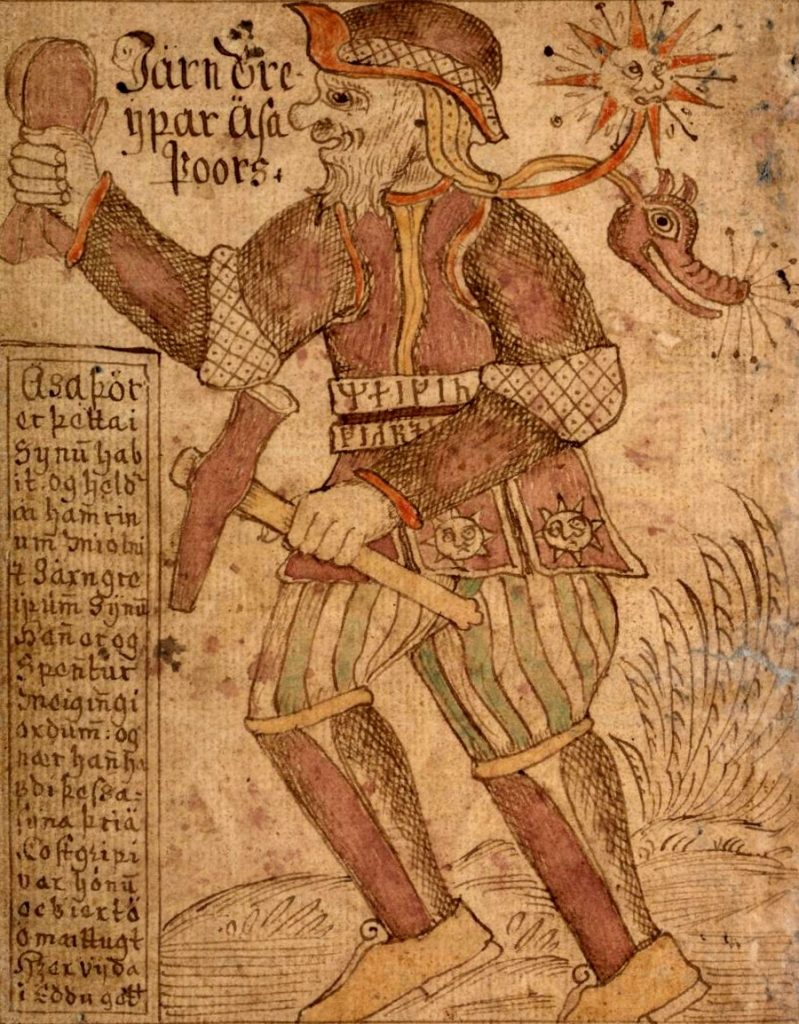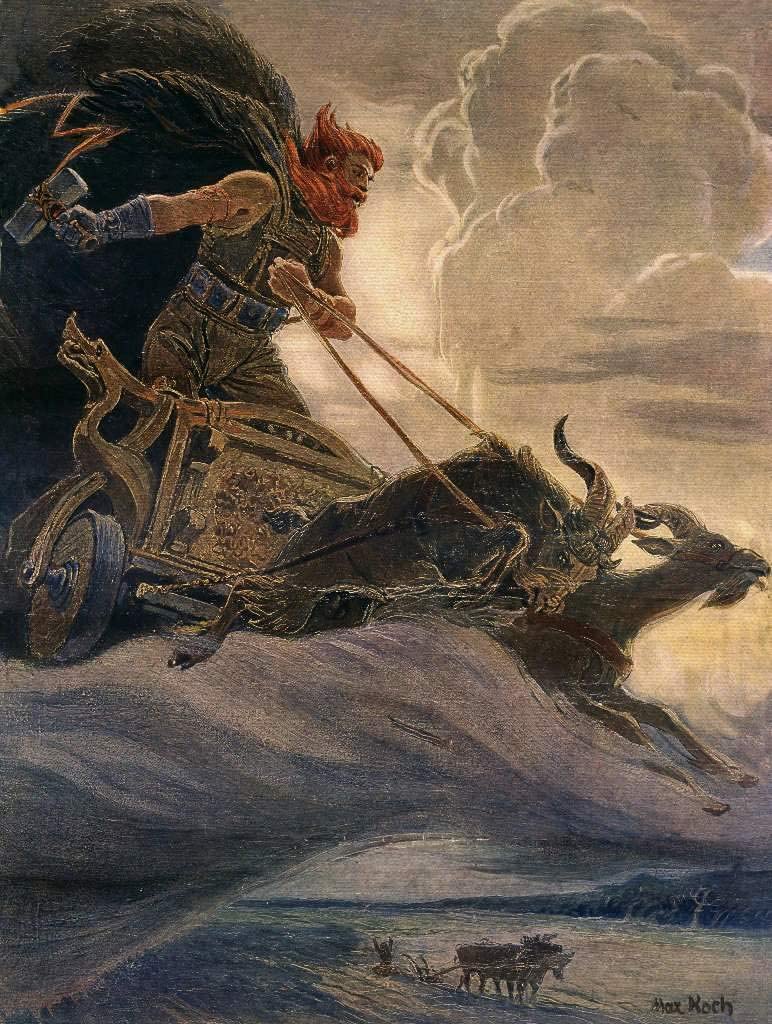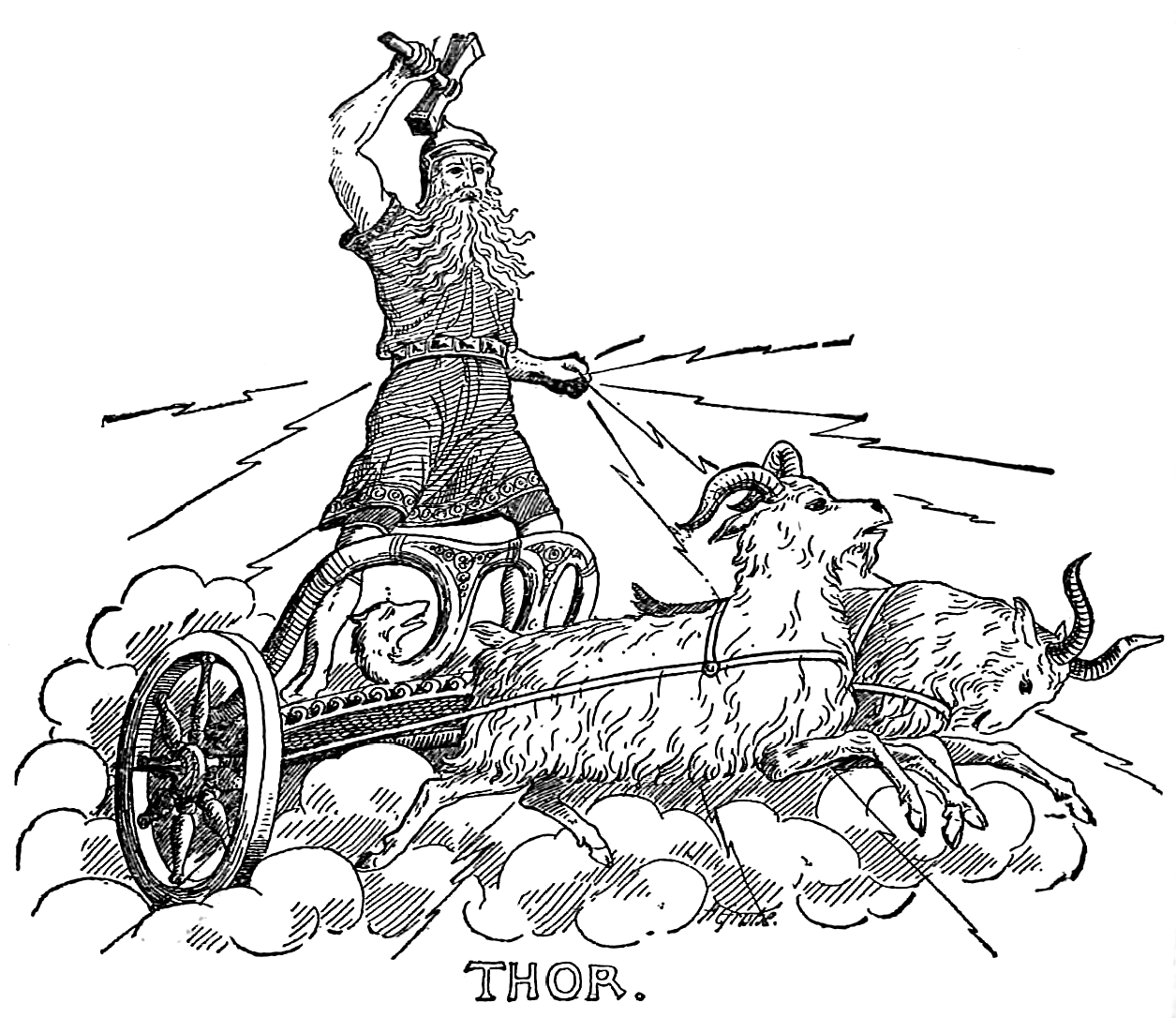Thor can fly but only with help. According to the original mythology, Mjölnir does not give Thor the ability to fly. His chariot, drawn by the two goats Toothgnasher and Toothgrinder, allows him to soar through the skies like a lightning bolt.
Read on to learn more about the god of thunder and how exactly he takes flight.
Can Thor Fly (and How)?
As far as we know, in the Prose Edda, Thor does not fly in any of the surviving stories about him. Thor’s ability to fly is an invention of modern comics and movies. Mjölnir (Thor’s hammer) does not grant Thor the ability to fly in the original mythology.
Instead of flying through the skies like a lightning bolt, he soars through the air on a chariot drawn by two goats, Toothgnasher and Toothgrinder (Tanngrisnir and Tanngnjóstr).
Does Thor’s hammer enable him to fly?
According to old Norse mythology, Thor’s hammer does not enable him to fly in Norse mythology.
Thor in Norse Mythology Vs. Marvel movies
In the movies, Thor is often seen swinging his hammer and launching into space after it as if he were launching a rocket. However, in the original mythology, Mjölnir does not provide Thor with the ability to fly. His chariot, drawn by the two goats, Toothgnasher and Toothgrinder, enables him to soar through the skies.
While flying around with the god of thunder may sound like a great career choice for a goat, the position does have some disadvantages. Unfortunately, Thor has been known to slaughter Toothgnasher and Toothgrinder for dinner. However, he always ensures he resurrects them the next day using his hammer.
In the Marvel Cinematic Universe, Thor’s powers have also been weakened in comparison to his mythological counterpart to create tension and stakes in the films, though it appears that he is slowly regaining them in recent installments.

Mjölnir, the legendary weapon through which Thor can summon lightning, is the only thing Norse mythology Thor and Marvel movies Thor have in common. Both in the Marvel Cinematic Universe and in classic mythology, this famous hammer resembles a boomerang, returning to Thor’s hand after being thrown.
Mjölnir is the only weapon Marvel’s Thor needs to wield in the films. According to the original myths, he must wear Járngreipr, a special pair of gloves, to use his hammer. These gloves are considered one of Thor’s three most vital possessions, along with Mjölnir and Megingjörð (a mystical belt that increases his strength). However, the films do not include these gloves.
Although the reference was brief, the belt Megingjörð is used by Marvel’s version of Thor. Spider-Man: Homecoming revealed that the belt was being shipped to the New Avengers Facility for storage. Happy Hogan tries to pronounce the belt’s name while listing off items for packing but eventually gives up and refers to it as “Thor’s magic belt.”
According to the Poetic Edda, Thor is usually depicted as a middle-aged man with red hair in Norse mythology, as opposed to the MCU’s younger, blonder version. Classic depictions of Thor more closely resemble the look of Thor in Avengers: Endgame than Chris Hemsworth’s signature physique.
Thor and Loki both survive Surtr’s attack on Asgard at the end of Thor: Ragnarok. However, this is not how Ragnarök was depicted in the original myths. As a matter of fact, most of the well-known Norse gods are supposed to die during Ragnarök, including Thor, Loki, Odin, and Heimdall, so there is a substantial difference between Thor from Norse mythology and Thor from Marvel.
Moreover, Surtr sets not only Asgard on fire but also the entire universe, leaving only a handful of gods and two humans alive to rebuild civilization. However, if this had occurred in the Marvel films, Thanos would have had little to do.

There is also a difference in their personalities. Marvel comics Thor is a noble hero any of us would feel safe around; Norse myth’s Thor is a fierce warrior with a violent temper who seems to relish the slaughter of anyone who challenges him.
Sif is revered as a warrior in the MCU, but her classical portrayal is a little different. According to mythology, the goddess Sif is a fertility goddess married to Thor. They have two children, Magni and Modi, together.
Interesting Fact: In the Viking Age (c. 790-1100), Thor’s popularity reached its peak when he was considered the greatest rival to Christ when Christianity was introduced to Scandinavia in the 10th century.
There are more amulets and charms associated with Thor’s hammer that date from the period when Christianity and the Norse religion were in conflict than in any other period. Then, in the 12th century, Christianity gradually replaced the cult of Thor with the new religion.

